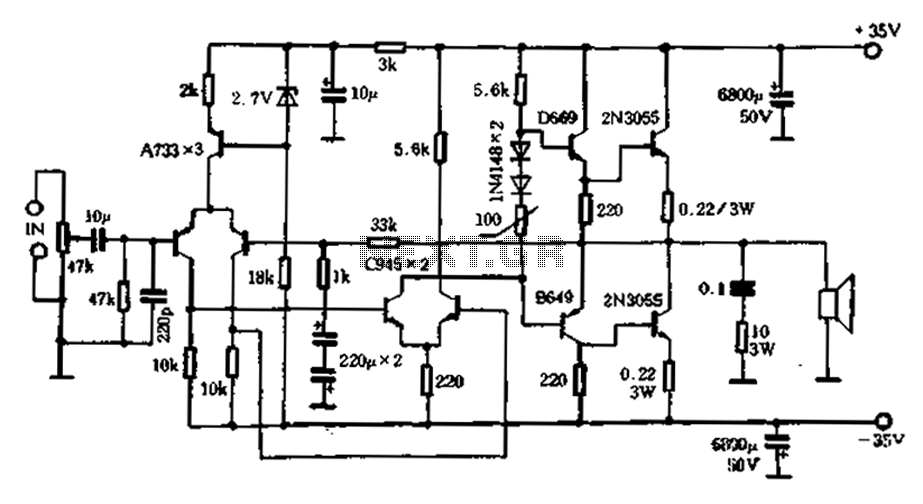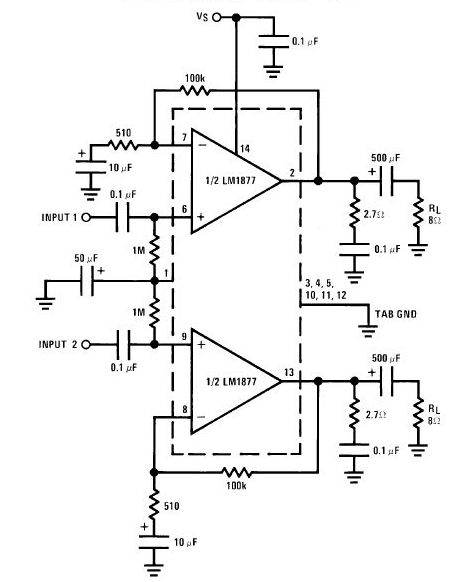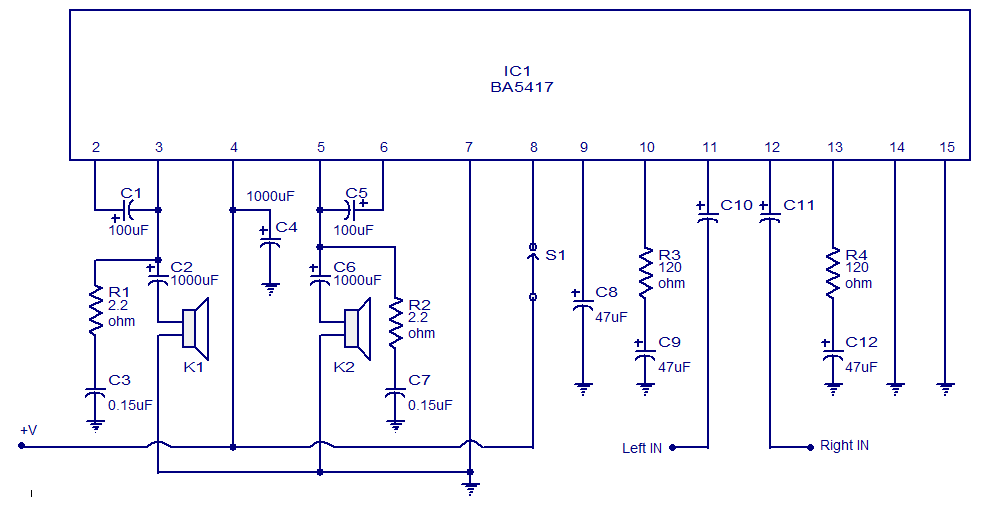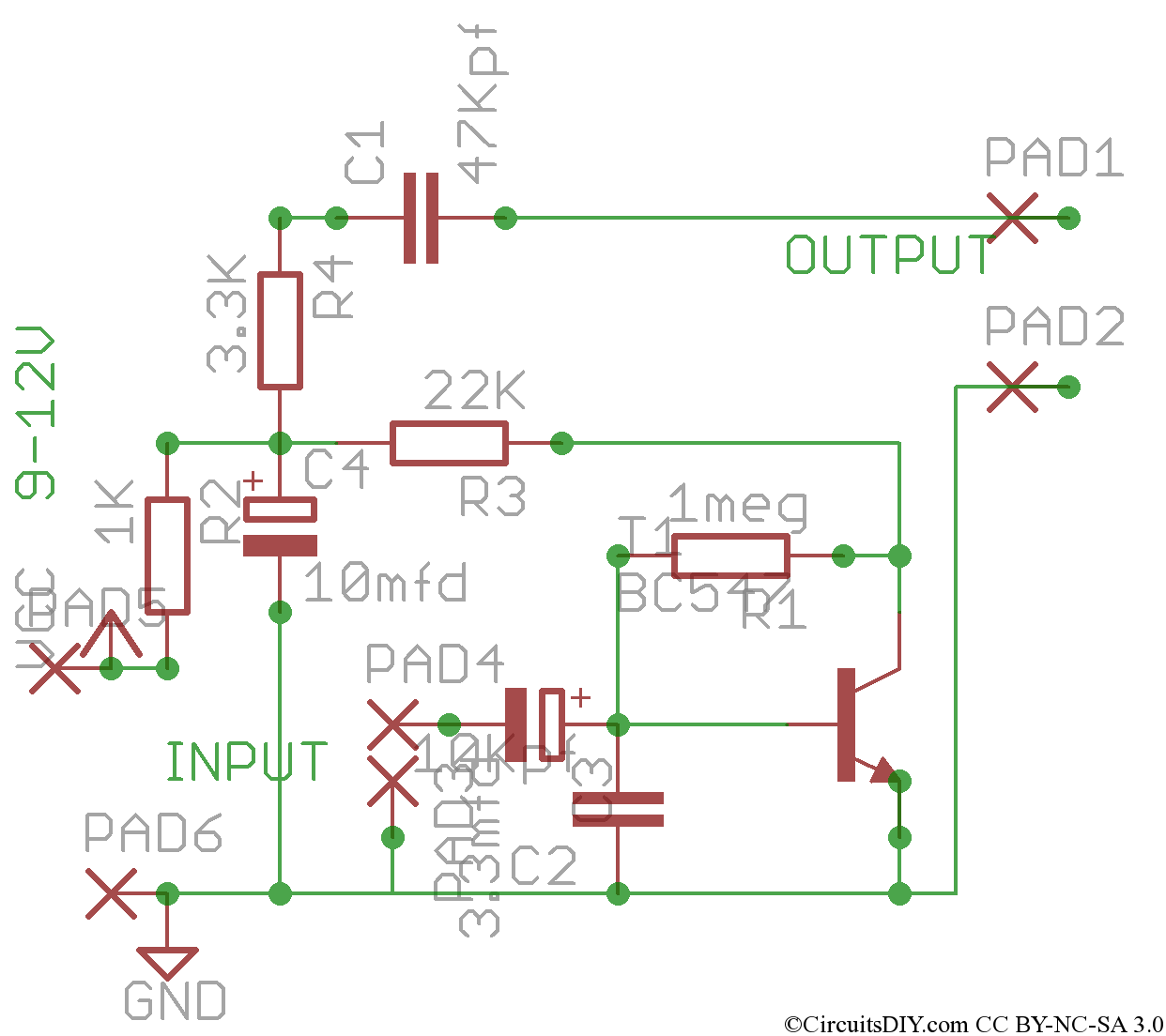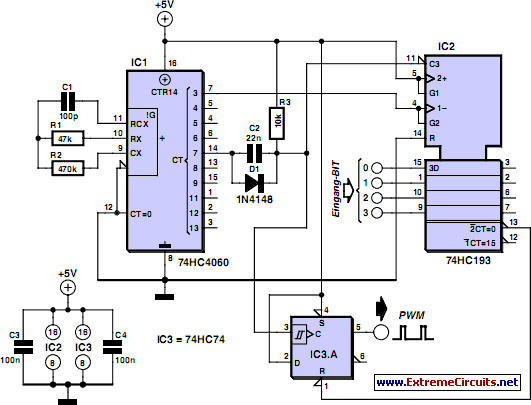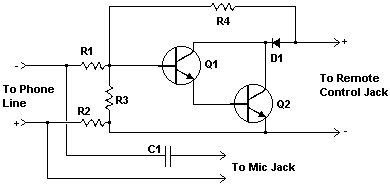
100W ultra-CPI amplifier circuit
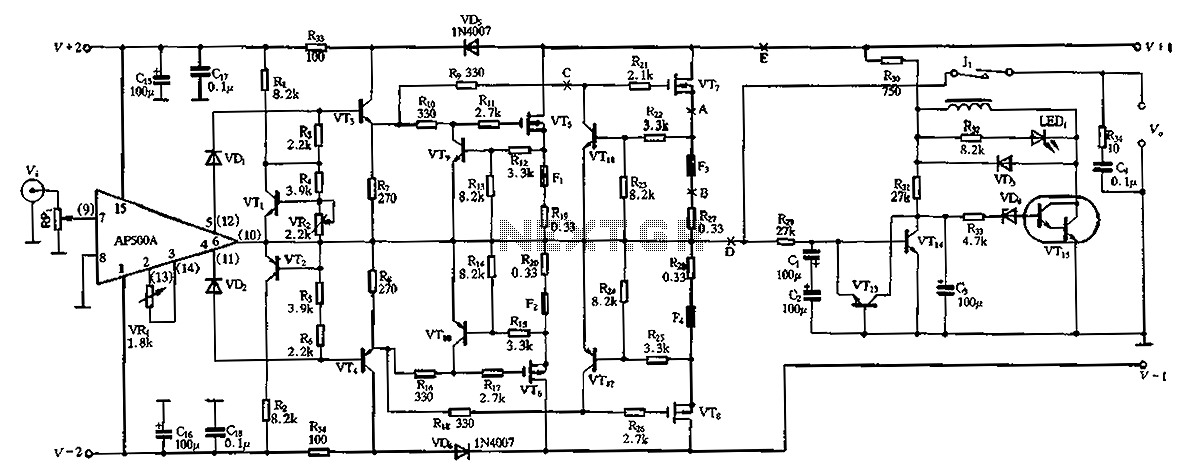
The CPI is a 100W DC super power amplifier circuit based on the AP500. It features a parallel push-pull amplifier output stage composed of transistors VT5, VT6, and VT7 to enhance output power. The circuit's output power is low initially; therefore, to improve the AP500's driving capability, a buffer amplifier stage is created using transistors VT3 and VT4. This parallel output configuration not only increases power but also reduces the input attenuation of the FET, preserving the original sound quality of the audio signal. Furthermore, the circuit enhances linearity and damping characteristics with components VT1, VT2, RP1, and diodes VD1 and VD2 forming an ultra-CPI bias circuit. The amplifier operates with high-quality Class A and Class B efficiency. The constant voltage bias is maintained by transistors VT1 and VT2, with the bias voltage adjustable via RP2, allowing for modification of the output transistor quiescent current. The final output tube circuit's quiescent current is adjustable to 60 mA. Diode VD1 is used to prevent backflow in the circuit, ensuring current flows in the intended direction and preventing the output MOSFET from entering an off state under any conditions.
The CPI 100W DC super power amplifier circuit is designed to provide high fidelity audio amplification while maintaining efficiency. The parallel push-pull configuration of the output stage, utilizing transistors VT5, VT6, and VT7, allows for significant power enhancement, effectively doubling the output capability while managing thermal performance. The buffer amplifier stage composed of VT3 and VT4 is critical in driving the output stage, providing the necessary current gain and reducing the potential for distortion.
The circuit's design prioritizes audio integrity by minimizing input signal attenuation through the use of field-effect transistors (FETs). This characteristic ensures that the amplifier reproduces the audio signal with high fidelity, preserving the original sound characteristics. The ultra-CPI bias circuit, comprising components VT1, VT2, RP1, VD1, and VD2, plays a vital role in maintaining consistent performance across varying load conditions. The biasing arrangement allows for precise control over the quiescent current of the output transistors, enhancing linearity and damping performance, which is crucial for high-quality audio reproduction.
The adjustable bias voltage provided by RP2 enables fine-tuning of the output stage's thermal characteristics, allowing the amplifier to adapt to different operating conditions without compromising performance. The inclusion of diode VD1 is a protective measure, ensuring that current flows only in the intended direction, thus preventing any potential damage to the output stage.
Overall, the CPI 100W DC super power amplifier circuit exemplifies advanced engineering in audio amplification, balancing power, efficiency, and sound quality to meet the demands of high-performance audio applications. CPI is 100w DC super power amplifier circuit composed by the AP500. FIG VTs, Vr7 and VT6, VTs parallel push-pull amplifier output stage the composition, to increase the output power. The circuit output power up loow, in order to improve the ability AP500 driven by VT3, VT4 composition of the buffer amplifier stage. In addition to output in parallel to increase the output power, but also reduces the FET input attenuation junction capacitance audio harmonics, the input signal to keep the original sound.
In addition to improving the output of the circuit linearity, improved damping characteristics also have a role in O VTl, VT2, RPi and VDi.VD2 output circuit composed of ultra-CPI bias circuit, the amplifier circuit has a high-quality Class A and Class B high efficiency. fl, VT2 constant voltage bias, the bias voltage can be adjusted to adjust RP2 can change the output transistor quiescent current.
The final output tube circuit quiescent current is adjusted lo ~ 60mAoVDi, f bah to prevent backflow circuit, allowing current to flow only to set direction and allowed to flow in the opposite direction, which ensures super CPI bias circuit in any the case does not appear output MOSFET is off work status o
The CPI 100W DC super power amplifier circuit is designed to provide high fidelity audio amplification while maintaining efficiency. The parallel push-pull configuration of the output stage, utilizing transistors VT5, VT6, and VT7, allows for significant power enhancement, effectively doubling the output capability while managing thermal performance. The buffer amplifier stage composed of VT3 and VT4 is critical in driving the output stage, providing the necessary current gain and reducing the potential for distortion.
The circuit's design prioritizes audio integrity by minimizing input signal attenuation through the use of field-effect transistors (FETs). This characteristic ensures that the amplifier reproduces the audio signal with high fidelity, preserving the original sound characteristics. The ultra-CPI bias circuit, comprising components VT1, VT2, RP1, VD1, and VD2, plays a vital role in maintaining consistent performance across varying load conditions. The biasing arrangement allows for precise control over the quiescent current of the output transistors, enhancing linearity and damping performance, which is crucial for high-quality audio reproduction.
The adjustable bias voltage provided by RP2 enables fine-tuning of the output stage's thermal characteristics, allowing the amplifier to adapt to different operating conditions without compromising performance. The inclusion of diode VD1 is a protective measure, ensuring that current flows only in the intended direction, thus preventing any potential damage to the output stage.
Overall, the CPI 100W DC super power amplifier circuit exemplifies advanced engineering in audio amplification, balancing power, efficiency, and sound quality to meet the demands of high-performance audio applications. CPI is 100w DC super power amplifier circuit composed by the AP500. FIG VTs, Vr7 and VT6, VTs parallel push-pull amplifier output stage the composition, to increase the output power. The circuit output power up loow, in order to improve the ability AP500 driven by VT3, VT4 composition of the buffer amplifier stage. In addition to output in parallel to increase the output power, but also reduces the FET input attenuation junction capacitance audio harmonics, the input signal to keep the original sound.
In addition to improving the output of the circuit linearity, improved damping characteristics also have a role in O VTl, VT2, RPi and VDi.VD2 output circuit composed of ultra-CPI bias circuit, the amplifier circuit has a high-quality Class A and Class B high efficiency. fl, VT2 constant voltage bias, the bias voltage can be adjusted to adjust RP2 can change the output transistor quiescent current.
The final output tube circuit quiescent current is adjusted lo ~ 60mAoVDi, f bah to prevent backflow circuit, allowing current to flow only to set direction and allowed to flow in the opposite direction, which ensures super CPI bias circuit in any the case does not appear output MOSFET is off work status o
